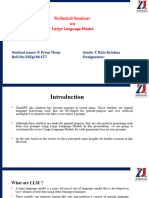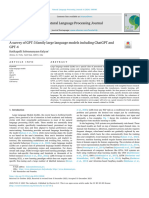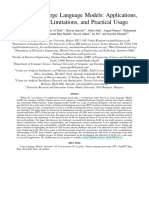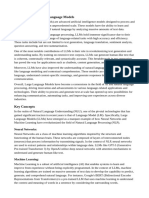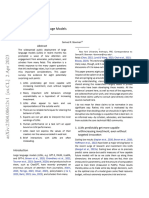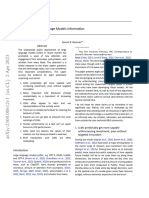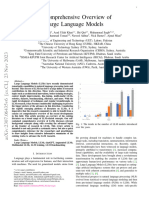0% found this document useful (0 votes)
18 views17 pagesModule 2
This document discusses the training and capabilities of large language models (LLMs), highlighting their reliance on vast datasets and the challenges of data transparency, ethical usage, and bias. It explains the training process involving pretraining and fine-tuning, as well as emergent properties that allow LLMs to perform tasks they weren't explicitly trained for. The document also addresses concerns about bias in LLMs and the implications of their capabilities for the future of artificial intelligence.
Uploaded by
AnushaCopyright
© © All Rights Reserved
We take content rights seriously. If you suspect this is your content, claim it here.
Available Formats
Download as DOCX, PDF, TXT or read online on Scribd
0% found this document useful (0 votes)
18 views17 pagesModule 2
This document discusses the training and capabilities of large language models (LLMs), highlighting their reliance on vast datasets and the challenges of data transparency, ethical usage, and bias. It explains the training process involving pretraining and fine-tuning, as well as emergent properties that allow LLMs to perform tasks they weren't explicitly trained for. The document also addresses concerns about bias in LLMs and the implications of their capabilities for the future of artificial intelligence.
Uploaded by
AnushaCopyright
© © All Rights Reserved
We take content rights seriously. If you suspect this is your content, claim it here.
Available Formats
Download as DOCX, PDF, TXT or read online on Scribd
/ 17










